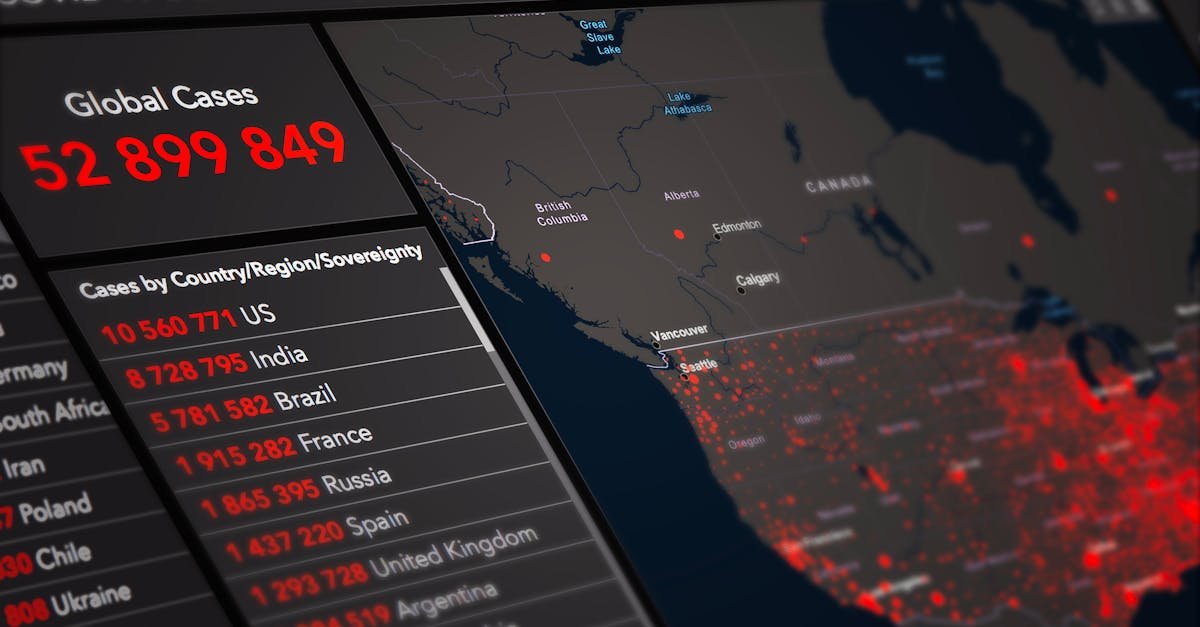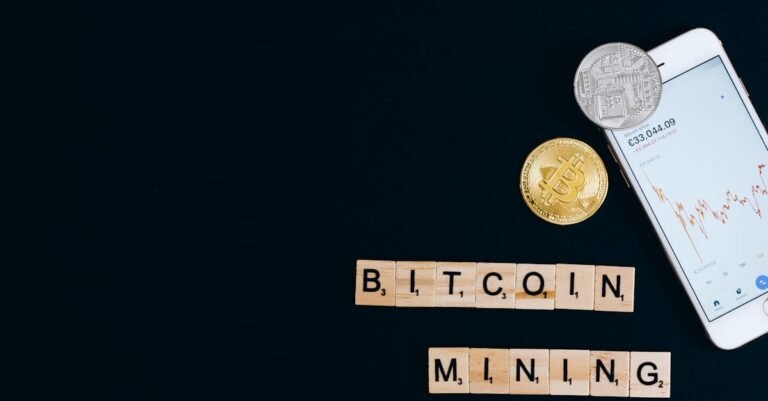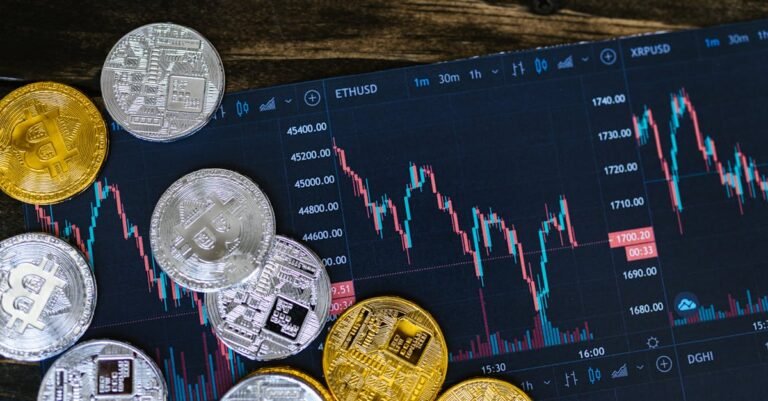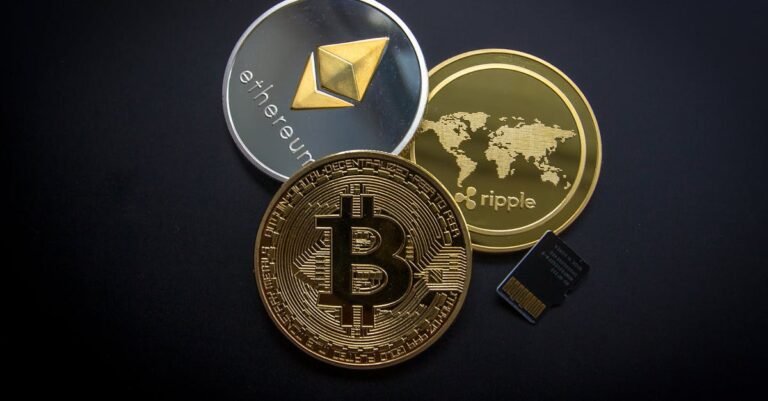Beyond the Hype: Discovering Altcoins with Real World Value
Ever feel like the world of cryptocurrency is just a whirlwind of confusing names, skyrocketing prices, and then sudden crashes? You hear about Bitcoin, maybe Ethereum, but then there’s this vast ocean of thousands of other coins called “altcoins.” It’s easy to get lost, right? Many people jump in chasing quick profits, only looking at price charts. But what if I told you that some of these altcoins are more than just digital lottery tickets? What if some are actually building the foundations for a completely new way of doing things, solving real problems we face every single day?
That’s what we’re diving into today. We’re cutting through the noise and focusing on altcoins with real world use cases. These aren’t just concepts floating in cyberspace; they are cryptocurrencies powering actual applications, streamlining businesses, and creating tangible value outside the crypto trading bubble. Think about it: for any technology to stick around long term, it needs to be useful. It needs to do something better, faster, or cheaper than the old way. The same applies to digital assets. While the market buzz is exciting, the projects quietly building real solutions are the ones that truly capture my attention. They represent the potential of blockchain technology not just as money, but as a powerful tool for innovation.
So, grab a coffee, get comfortable, and let’s explore some of the most interesting players in this space. We’ll look at what problems they solve, how they work (in plain English!), and why their utility makes them stand out. This isn’t financial advice, of course, but rather a journey into the practical side of crypto, exploring the best altcoins that are already making a difference in the real world. Forget the moonshot promises for a moment, and let’s talk about genuine application and sustainable value. Are you ready to see what’s hiding beneath the surface?
Chainlink (LINK): Bridging Blockchains to the Real World
Okay, let’s start with a really fascinating project: Chainlink, often recognized by its ticker symbol, LINK. Now, imagine you have a super secure, automated agreement running on a blockchain. These are called smart contracts. Think of them like digital vending machines: you put in the required input (crypto), and it automatically dispenses the output (maybe a digital collectible, access to a service, or another cryptocurrency). Ethereum popularized smart contracts, and they are incredibly powerful because they run exactly as programmed without needing a middleman. But there’s a catch, a big one actually. Blockchains, by their very nature, are isolated digital islands. They are great at keeping track of what happens on the blockchain, but they have no built in way to know what’s happening in the outside world. They can’t check the weather, the score of a baseball game, the price of oil, or if your package arrived.
This is known as the “oracle problem.” How can a smart contract, designed to be automated and trustless, rely on external data without compromising its security and reliability? If the contract needs real world information to execute correctly – say, an insurance contract paying out based on reported rainfall, or a financial derivative settling based on a stock price – where does it get that data? If you just plug in a single website’s feed, what happens if that website is wrong, gets hacked, or goes offline? The whole smart contract breaks down or executes incorrectly. This is where Chainlink steps in, acting as a crucial bridge.
Chainlink isn’t actually a blockchain itself; it’s a decentralized network of “oracles.” Think of these oracles as data messengers. But instead of relying on just one messenger (which could be unreliable or dishonest), Chainlink uses a whole network of them. Here’s the simplified version of how it works:
- A smart contract needs specific real world data (e.g., the current temperature in London).
- The smart contract sends a request to the Chainlink network.
- Chainlink nodes (the oracles) bid to fulfill this request. These nodes are incentivized to provide accurate data using LINK tokens. They stake LINK, and if they provide bad data, they can lose their stake. This keeps them honest.
- Multiple selected nodes independently fetch the requested data from various reliable sources (like weather APIs, financial data providers, IoT sensors).
- The nodes report their findings back to the Chainlink network.
- Chainlink aggregates and validates these answers. It filters out outliers or potentially incorrect data points, arriving at a highly reliable, consensus based answer.
- This validated data is then delivered back to the original smart contract on its blockchain.
- The smart contract can now securely execute based on this trustworthy real world information.
This decentralized approach is key. By using multiple data sources and multiple independent oracles, Chainlink drastically reduces the risk of manipulation or failure. It allows smart contracts to interact safely and reliably with off chain data and systems. This unlocks a massive range of possibilities for blockchain applications. Suddenly, smart contracts aren’t limited to just managing tokens on a blockchain; they can interact with almost anything.
So, what are the real world use cases for this technology? They are incredibly diverse and growing rapidly:
- Decentralized Finance (DeFi): This is perhaps Chainlink’s most prominent use case currently. DeFi platforms offering lending, borrowing, derivatives, and stablecoins rely heavily on accurate, real time price feeds for various cryptocurrencies and traditional assets. Chainlink Price Feeds are the industry standard, securing billions of dollars in value across numerous DeFi protocols. Without reliable price oracles like Chainlink, many DeFi applications simply couldn’t function safely. Imagine a lending platform liquidating collateral based on a faulty price – Chainlink helps prevent that.
- Insurance: Parametric insurance is a perfect fit. Imagine crop insurance that automatically pays out if a Chainlink oracle reports that rainfall in a specific region fell below a certain threshold, or flight delay insurance that pays automatically if an oracle confirms your flight was delayed by more than two hours using flight data APIs. No claims adjusters, no lengthy paperwork – just automated payouts based on verified real world events. Lemonade, a major insurance company, has explored using Chainlink for this kind of innovation.
- Supply Chain & Logistics: Smart contracts can track goods through a supply chain, triggering actions based on real world events reported by oracles. For example, confirming a shipment’s arrival via GPS data or IoT sensors could automatically release payment to the supplier.
- Gaming and NFTs: Chainlink VRF (Verifiable Random Function) provides provably fair and tamper proof randomness for blockchain based games and NFT minting. Need to randomly assign traits to an NFT character or determine loot drops in a game? Chainlink VRF ensures the outcome is genuinely random and verifiable on the blockchain, increasing trust and fairness.
- Enterprise Solutions: Businesses can use Chainlink to connect their existing systems (databases, APIs, legacy infrastructure) to various blockchains. This allows them to leverage blockchain’s security and transparency benefits without completely overhauling their current operations. AccuWeather, the Associated Press, and Google Cloud Platform are among the major entities that have collaborated with Chainlink, providing data or utilizing its oracle services, showcasing its adoption beyond just the crypto native world.
The LINK token itself is a utility token. It’s used to pay the Chainlink node operators for their services in retrieving and preparing off chain data for smart contracts. Node operators also stake LINK as collateral to ensure their reliability and honesty. This creates intrinsic demand for the token based on the usage of the network. As more smart contracts require real world data, the demand for Chainlink’s oracle services, and therefore the LINK token, potentially increases. This direct link between network usage and token utility is a hallmark of altcoins with real world use cases.
Chainlink’s importance lies in its ability to vastly expand the scope of what smart contracts and blockchain technology can achieve. It’s the essential plumbing connecting the isolated blockchain world to the vast ocean of real world data and events. Without reliable oracles, many of the most exciting blockchain applications would remain theoretical. By providing this secure and decentralized bridge, Chainlink has established itself as a critical piece of infrastructure for the burgeoning Web3 ecosystem and numerous industries looking to integrate blockchain solutions. Its continued adoption by both crypto projects and traditional enterprises highlights its significant role in making blockchain technology practical and useful in everyday contexts. It’s a prime example of a project focusing on solving a fundamental technical challenge, thereby unlocking immense value and demonstrating clear cryptocurrency utility.
VeChain (VET): Tracking Goods and Trust on the Blockchain
Let’s switch gears now and look at another fascinating altcoin tackling a completely different set of real world problems: VeChain, with its native token VET. While Chainlink focuses on bringing external data onto the blockchain, VeChain focuses on using blockchain to track and verify physical goods and data throughout their lifecycle. Its primary target? The incredibly complex world of supply chain management, logistics, and anti counterfeiting.
Think about the journey of a product you buy, maybe a luxury handbag, a bottle of fine wine, or even critical medication. It travels through multiple stages: manufacturing, warehousing, shipping, customs, retail. At each step, information is recorded, often in siloed, easily manipulated databases or even paper records. This lack of transparency and trust creates huge problems: counterfeit goods flood markets, food safety can be compromised, logistics become inefficient, and consumers often have no way to verify the authenticity or origin of what they’re buying. How do you know that organic food is truly organic? How can a luxury brand prove its product isn’t a fake? How can a pharmaceutical company guarantee medicine wasn’t tampered with during transit?
This is the challenge VeChain aims to solve using its public blockchain platform, VeChainThor. VeChain combines blockchain technology with physical identification methods like QR codes, NFC (Near Field Communication) chips, or RFID (Radio Frequency Identification) tags. Here’s a simplified idea of how it works:
- Unique Digital Identity: Each physical product or batch is assigned a unique ID that is registered on the VeChainThor blockchain.
- Physical Tagging: This unique ID is linked to a physical tag (QR code, NFC chip) attached to the product.
- Data Recording at Key Points: As the product moves through the supply chain, authorized participants (manufacturers, logistics providers, inspectors, retailers) use dedicated applications to scan the tag and record relevant data onto the blockchain. This data could include location updates, temperature readings (using IoT sensors), custody changes, quality checks, or customs clearance information.
- Immutable Record: Each piece of data recorded is cryptographically signed and added to the blockchain, creating a permanent, unchangeable, and transparent history for that specific product.
- Consumer Verification: Finally, the end consumer can often scan the product’s tag with their smartphone to access this verifiable history directly from the blockchain, confirming its authenticity, origin, journey, and other key details.
What makes this powerful? The blockchain acts as a single, shared source of truth that all participants can trust, without needing to trust each other directly. Data, once recorded, cannot be secretly altered or deleted. This brings unprecedented transparency and accountability to supply chains.
Let’s look at some concrete real world use cases where VeChain is already making an impact:
- Anti Counterfeiting: This is a massive market. Luxury goods brands can use VeChain to tag their products, allowing customers to easily verify authenticity by scanning the tag. This helps protect brand reputation and prevents revenue loss to counterfeiters. Think high end fashion, wines and spirits, or collectibles. For example, multiple wineries have used VeChain to allow consumers to verify the origin and handling of their wine bottles.
- Food Safety & Traceability: Tracking food products from farm to fork is crucial for safety and consumer trust. VeChain allows companies to record data points like origin, batch numbers, processing dates, storage temperatures, and shipping routes on the blockchain. If a contamination issue arises, the source can be quickly identified. Companies like Walmart China have utilized VeChain’s platform to track food products, enhancing transparency for their customers. Consumers can scan products and see exactly where their food came from and how it was handled.
- Pharmaceuticals & Healthcare: Ensuring the integrity of the drug supply chain is vital. VeChain can track medicines from manufacturer to patient, helping to prevent counterfeit drugs from entering the market and ensuring proper handling (e.g., maintaining required temperatures for vaccines). It can also be used to manage sensitive medical records securely. Bayer China, a pharmaceutical giant, has explored using VeChain for clinical trial traceability.
- Automotive Industry: VeChain can create a “digital passport” for vehicles. This passport, stored on the blockchain, can immutably record mileage, maintenance history, ownership changes, and accident reports. This helps combat mileage fraud and provides buyers of used cars with a reliable vehicle history. Renault has previously partnered with VeChain in this area.
- Sustainability & Carbon Tracking: VeChain is also venturing into tracking carbon emissions data. Businesses can record their carbon footprint data on the blockchain, providing transparent and verifiable information for regulators, investors, and consumers concerned about sustainability. This aligns with the growing demand for Environmental, Social, and Governance (ESG) reporting.
- Logistics & Quality Control: By integrating with IoT (Internet of Things) sensors, VeChain can automatically record real time data like temperature, humidity, or impact events during shipping. If sensitive goods (like electronics or chemicals) are exposed to conditions outside acceptable parameters, it’s recorded immutably, improving quality control and accountability.
VeChain utilizes a two token system: VeChain Token (VET) and VeThor Token (VTHO).
- VET: This is the primary value transfer token on the network. Holding VET allows users and businesses to access the network’s resources. It acts somewhat like a store of value or “smart money” within the VeChain ecosystem.
- VTHO: This token is used to pay for transactions and smart contract deployments on the VeChainThor blockchain – essentially, it’s the “gas” that powers the network. What’s interesting is that holding VET automatically generates VTHO over time. This model aims to decouple the cost of using the blockchain from the speculative price volatility of the main token (VET), making operational costs more predictable for businesses using the platform.
This dual token system is designed specifically to make the platform enterprise friendly. Businesses need predictable costs to operate, and generating VTHO from VET provides a mechanism for this, separating the operational cost (VTHO) from the capital investment (VET).
The strength of VeChain lies in its clear focus on solving tangible business problems, particularly in supply chain and logistics. Its combination of blockchain, IoT, and physical tagging creates a powerful tool for transparency, traceability, and trust. The partnerships VeChain has secured with major companies like DNV GL (a global quality assurance and risk management company, which is also a shareholder), PwC (PricewaterhouseCoopers), Walmart China, and others demonstrate significant real world adoption and validation of its technology. This isn’t just a theoretical concept; it’s a platform being actively implemented by businesses seeking efficiency and security gains. VeChain stands as a strong example of a blockchain solution moving beyond finance to optimize physical world processes, making it a noteworthy altcoin with real world use cases.
Evaluating Altcoins: Why Utility Matters More Than Hype
We’ve journeyed through two powerful examples – Chainlink connecting blockchains to real world data, and VeChain tracking real world goods with blockchain – but they are just the tip of the iceberg. There are numerous other altcoins striving to carve out niches by providing genuine cryptocurrency utility. Think about projects focused on decentralized file storage aiming to compete with cloud giants, platforms enabling secure digital identity management, or networks facilitating faster and cheaper international payments.
The key takeaway from exploring projects like Chainlink and VeChain is the importance of focusing on utility and real world adoption when evaluating any digital asset beyond Bitcoin. While market sentiment, price charts, and community buzz can drive short term movements, sustainable long term value is often built on a foundation of actual usefulness. Ask yourself: What problem does this project solve? Is it a real problem that people or businesses face? Is blockchain the best tool to solve it? Who is actually using this technology? Are there tangible partnerships and adoption, or just ambitious promises?
Consider these points when looking at any altcoin:
- The Problem & Solution Fit: Does the project address a genuine pain point? Is the proposed blockchain solution significantly better (more efficient, secure, transparent, cheaper) than existing solutions? Sometimes, a blockchain solution is created for a problem that doesn’t really need one.
- Technology & Mechanism: How does it actually work? You don’t need to be a coder, but understanding the basic mechanism (like Chainlink’s oracles or VeChain’s tagging system) helps assess its feasibility and potential. Is the technology sound and secure?
- Team & Development: Who is behind the project? Do they have relevant experience? Is development active and transparent? Look for regular updates, a clear roadmap, and community engagement.
- Partnerships & Adoption: This is crucial for real world use cases. Are reputable companies or organizations actually using or piloting the technology? Partnerships listed on a website are one thing; evidence of actual implementation is much stronger. Look for case studies, usage statistics, or announcements from the partners themselves.
- Tokenomics & Utility: What is the purpose of the native token (like LINK or VET/VTHO)? Is there a clear reason for it to exist and be used within the network? Does demand for the network’s service translate into demand for the token? Be wary of tokens that seem to exist solely for fundraising or speculation with no clear function. A strong utility token has its value intrinsically linked to the platform’s success.
- Competition & Niche: How does the project stack up against competitors, both blockchain based and traditional? Does it have a unique advantage or is it entering a crowded market?
- Community & Ecosystem: Is there an active and supportive community building around the project? A strong ecosystem of developers, users, and partners can drive growth and innovation.
Investing time in this kind of research, focusing on fundamentals rather than just price action, can help you navigate the complex world of altcoins more effectively. Projects with strong fundamentals and demonstrable real world use cases are arguably better positioned for long term resilience and growth, regardless of the market’s daily fluctuations. They represent the evolution of blockchain technology from a purely financial instrument into a versatile tool capable of reshaping industries.
Summary and Your Next Step
So, we’ve seen that the world of altcoins is far richer and more practical than just speculation. Projects like Chainlink (LINK) are essential infrastructure, acting as secure bridges enabling smart contracts to interact with vital real world data, powering everything from DeFi to insurance. VeChain (VET) is transforming supply chains, bringing transparency and trust to the journey of physical goods using blockchain and IoT, tackling issues like counterfeiting and food safety. These are just two examples, but they clearly demonstrate that many altcoins with real world use cases are focused on delivering tangible value.
The core message is simple: utility matters. When exploring the vast landscape of digital assets and blockchain solutions, look beyond the hype. Dig deeper into what the project actually does. Understanding the problem it solves, how it works, who is using it, and the role of its native token provides a much clearer picture of its potential long term value than price charts alone.
The journey into understanding cryptocurrency and blockchain is ongoing. The technology is still evolving, and new applications are emerging constantly. Don’t feel pressured to chase every new trend. Instead, cultivate curiosity. Identify projects that genuinely interest you, especially those solving problems you understand or care about. Do your own research (DYOR), read their whitepapers (or summaries!), check their partnerships, and engage with their communities. Focusing on substance over speculation is not only a potentially wiser approach but also a much more fascinating way to engage with this revolutionary technology.
Ready to continue exploring? Start by picking one area that interests you – maybe it’s supply chain, decentralized finance, gaming, or data management – and research the leading blockchain projects in that space. Your journey into understanding the real value propositions within the crypto world has just begun!









